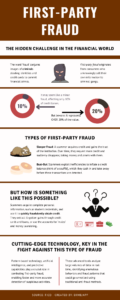Before the pandemic, digital payments were already on the rise, and this trend has shown no signs of stopping after the pandemic. Both users and businesses now prefer the digital banking model and are gradually moving away from cash payments. The speed and convenience of digital payments are two main reasons why users are opting for mobile wallets or contactless cards to make almost instant payments. However, whether they use peer-to-peer payment services or some other platform, these changes are also highly attractive for cybercriminals.
In their quarter financial crime report, Feedzai, a world-leading cloud-based financial crime management platform, has analysed financial crime and global consumer spending from April to July 2021. The data is certainly eye-opening. Everyone is increasingly moving towards cashless transactions. P2P payments increased 146% while cash transactions went down 44%. Online transactions increased 109%, which is almost double the number of transactions made with a physical or digital card. However, this change in consumer behaviour has also triggered changes in criminal behaviour, and according to the same study, the number of attempted frauds using online cards increased by 23% in the same period.
With the appearance of new technologies, the risks associated with financial crime have changed considerably and acquired a totally new dimension. Cyberspace is now a battlefield, and the online war is endless. Criminal activities are being increasingly more sophisticated and should not be underestimated as both their economic and social consequences can be devastating.
Furthermore, since the start of the Russian invasion of Ukraine on 24 February, scams and cyberattacks have intensified and multiplied. In fact, according to the UK government’s Department for Digital, Culture, Media and Sport, around 39% of businesses and some 30% of charities have reported some kind of cyberattack in the last 12 months. Cyberattacks are more frequent, sophisticated and complex, and no technological service or system is completely immune from the risks.
The key factors that play a role in financial fraud can be best illustrated with the fraud triangle which, logically, consists of three components: incentive, opportunity and rationalisation. The incentive for fraud normally comes from a financial need that puts pressure on the individual. This could be a result of financial problems and a lack of means to resolve them legitimately. Opportunity refers to the possibility of being able to commit a crime in order to steal funds and, importantly, not get caught. Ultimately, the lower the risk of being detected, the greater the opportunity. Finally, rationalisation refers to an individual’s attempts to justify their actions and present themselves as a normal, honest person.
Financial crime affects all of us. In the current financial ecosystem, fraud is such a primary concern for businesses and banking institutions that they are continuously adopting and implementing anti-fraud measures to fight crime, comply with regulations, increase efficiency and be more effective. Ultimately, digital payments, whether using credit cards or other means, must provide consumers with solid guarantees against fraud and protection in cases where purchases are damaged or stolen. This means that banking institutions have an obligation to guarantee the security of transactions and payments using authentication and verification systems. This way, the user can approve payments and identify the account used to make the transactions. However, despite all this, there is no guarantee that the goods or services themselves might not be fraudulent.
The best way to combat financial crime is essentially to detect it and prevent it from happening in the first place. This is why companies are having to incorporate new patterns in their systems to improve their ability to detect fraudulent activity. Some of the most important financial crimes included purchasing fraud, social engineering fraud, identity theft, account takeover fraud (ATO) and smashing.
As a combined result of the pandemic and Russia’s hybrid war, cybersecurity has now taken centre stage. To combat fraud effectively, organisations need cutting-edge programs and technology such as artificial intelligence and machine learning to continuously detect, prevent, monitor and mitigate fraud. It is also important for them to continually assess their vulnerability and make appropriate investments in coordination with third parties so that they get the most out of the tool available. There now exist solutions that analyse user behaviour and can identify any concerning patterns of activities. The battle against financial crime will be a long one and will involve work on many fronts, including improving the global framework to focus on intelligence and information exchange, the use of technology and collaboration between the public and private sectors. These efforts will surely make systems more effective and help to provide a collective response to financial crime, something which has an impact far beyond the financial sector and represents a serious threat to society at large.




